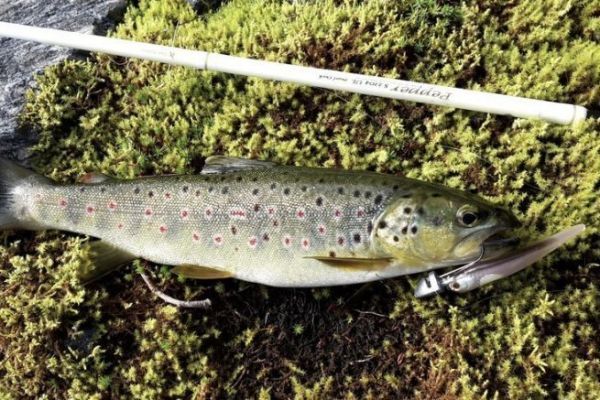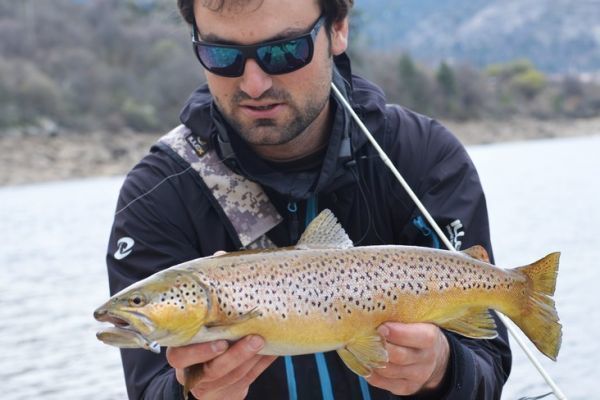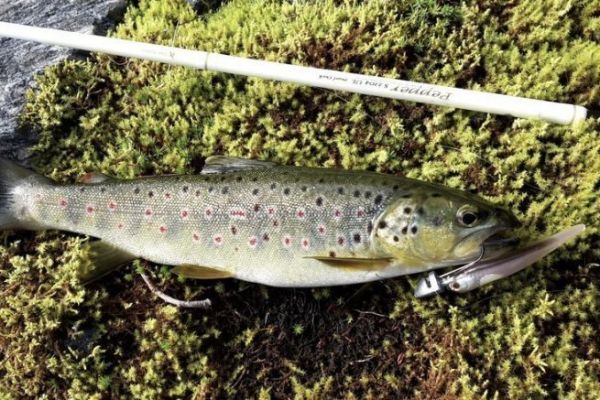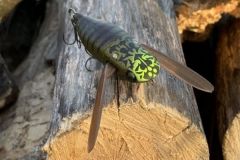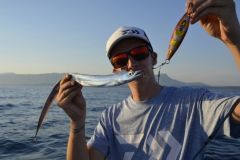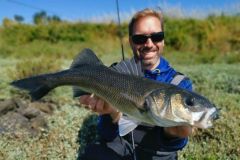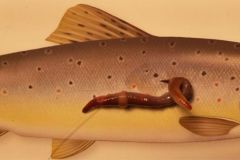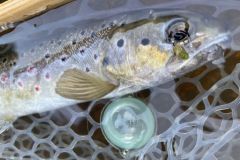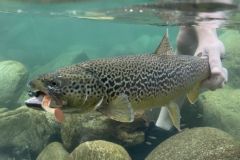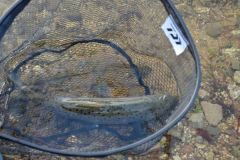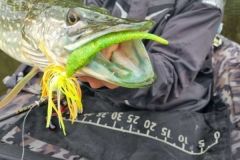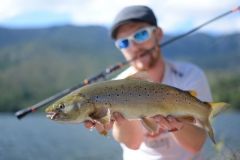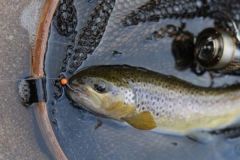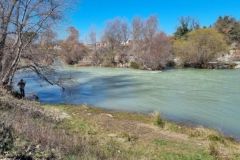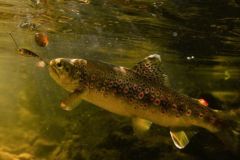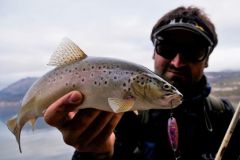Lake approach
This technique is particularly effective on lakes, as it allows you to quickly prospect a large volume of water.
For the same weight of sinker, a finesse lure will sink faster than a shad or comma, as it offers less resistance and friction in the water.
This allows you to fish deeper and deeper with a dynamic, lively stroke.
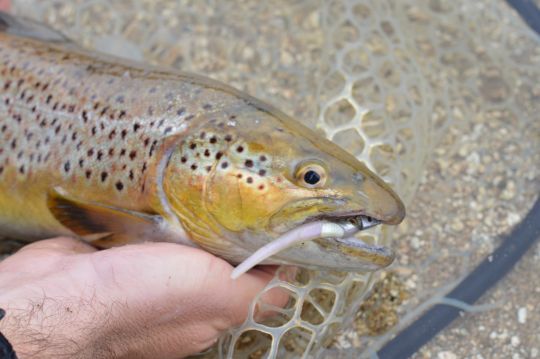
To my knowledge, this is one of the lures that does it best! You can easily juggle lures from 4'' (10 cm for large lake trout from dams, for example) to 2'' (5 cm for trout or char from high altitude lakes).
You need to adapt to the size of your prey and predators. On lakes, a long rod allows you to fish far away with better control. On lakes, I tend to fish with the rod low or on its side.
River approach
In rivers, whatever their configuration, fine lure fishing can tackle almost any river facies.
Also because it offers little resistance, the finesse will allow you to fish lighter, but also deeper and more methodically.
In pits, you can make contact with the bottom by casting upstream and "dartering" by letting the lure drift down.
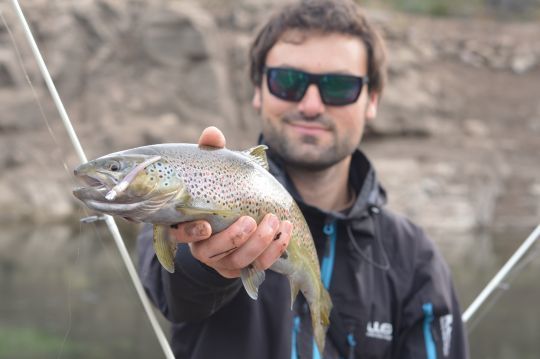
In rapids dotted with rocks, you can "drive" this soft lure by insisting on interesting spots and letting it drift close to the bottom, but it's clearly when fishing upstream that finesse soft lures express their maximum effectiveness.
Finding the right balance
While the basic mounting of a finesse soft lure is on a pointed "darter" head, there are several mounting variations to adapt.
For example, you can tie a "Rapala" knot (loop) for extremely loose, flowing darts. This is useful for lake fishing with regular, slow twitches.
A classic knot will restrict the finesse a little more for more controlled and nervous animations. If trout are struggling to bite, replace the pointed head with a round sinker which will give less amplitude but make it easier for salmonids to target your lure.
In return, the number of hits will decrease. You can also reduce the size of the lure or lighten the lead head to make attacks easier. On the other hand, you'll see from the various photos in this article that trout almost always bite at the corner of the jaw, as they really do tend to turn on the lure violently.
Hardware
In terms of tackle, I use the Illex SuperPin tail 2.5'' Illex I-Shad 2" combo or the Gunki Kiddy and Illex straight jig head in 3.5 grams, 5 grams or 7 grams. These ultra-realistic combos are easy to animate and extremely effective!
From a rod point of view, a sensitive, responsive and progressive rod is a must. The Pepper S2102ML Akoya pearl or the Stream Master S2102ML are perfectly adapted to the use of fine lures and can masterfully fight big, even very big fish.
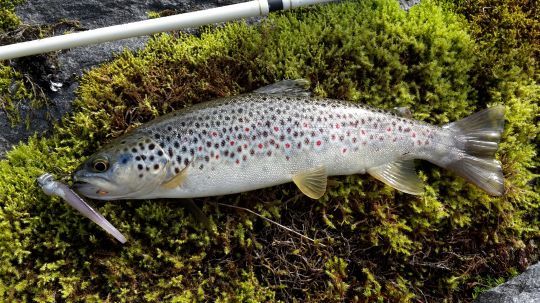
The rod will be accompanied by a 2000 to 2500 reel, preferably of intermediate ratio, and fitted with 16 to 22/100 nylon. The drag must be well adjusted, as surprises are not uncommon! Nylon, which is more elastic than braid, helps avoid stalls and generates fewer misfires on touch. On the other hand, it is less sensitive, hence the importance of having a sensitive rod. On rivers, a coloured nylon will enable you to follow the drift better and fish more accurately.
In conclusion, I think you'll quickly realize that this technique is truly formidable on trout. Don't hesitate to call on the "belle du pont" or to try spots where you suspect the presence of large salmonids with a reputation for impregnability, you'll be surprised...


